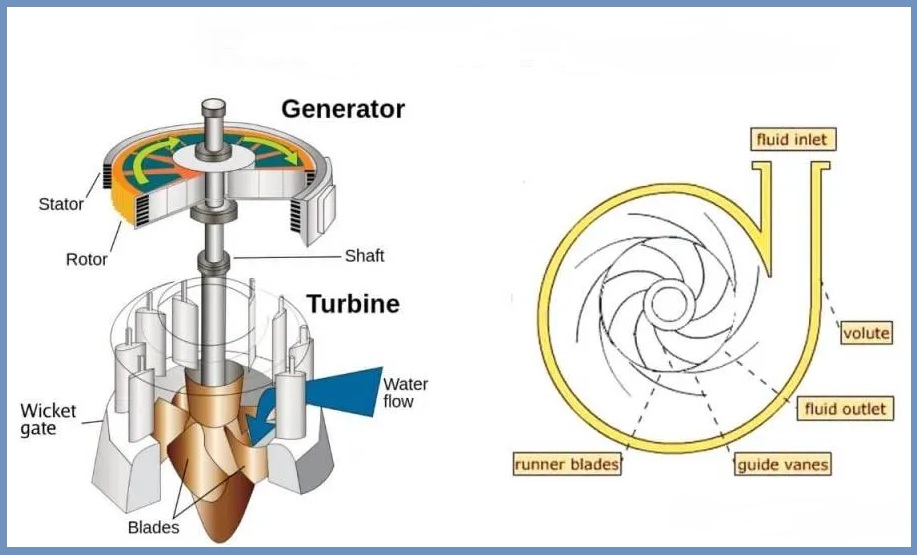The reaction turbine produces torque depending on the pressure and weight of the fluid. Reaction turbines have fixed blades and rotary nozzles.
Newton’s third law of motion (action and reaction are equal but opposite) explains how a reaction turbine works. Power is generated by the movement of water on the fixed blade.

In a reaction turbine, water first hits the rotor and then the nozzle. These turbines are ideal for low and medium heads. The
impulse turbine is used for high heads. Also, when using an impulse turbine, the water first hits the fixed nozzle and then the rotor blades.
There are many types of reaction turbines, which we will discuss in the next section, but wind turbines are the most common.
Table of Contents
How Does Reaction Turbine Work?
In reaction turbines, the blades are in a much larger amount of fluid and rotate as the fluid passes through them. Reaction turbines do not change the direction of fluid flow as significantly as impulse turbines. It only rotates as the fluid passes through the blade. The
a wind turbine is probably the best-known example of a reaction turbine.
If the impulse turbine is like kicking a soccer ball, the reaction turbine is like swimming. The reverse is also true. Please let me explain! Imagine a freestyle (crawl) by pulling your arm out of the water. It starts forward within reach of both hands and ends with a “pull-through” that pulls the arm backward.
Try to keep your hands and forearms pressed against the water for as long as possible so that you can transfer as much energy as possible per stroke.
The Reaction Turbine uses the same idea in reverse. Imagine fast-flowing water passing by you, moving your arms and legs, and energizing your body. In reaction turbines, keep the water in gentle contact with the blades for as long as possible so that the water releases as much energy as possible.
Water does not hit the blades and bounce like an impulse turbine, but the blades move more smoothly “on the flow”. Reaction turbines (multiple blades all contacting fluid at the same time) can extract more power than impulse turbines of the same size, as turbines absorb energy only at the point where the fluid contacts them. There are (usually only one or two) each of those vanes in the fluid pathway.
Performance of Reaction Turbine
Two important characteristics that determine the efficiency of a reaction turbine are the profile of the impeller on which the water slides and the angle of attack when the water hits the impeller blades. The adjustability of the rotor and guide vanes has made the turbine available for a variety of load requirements and water potentials.
The impeller blade also has a flexible angle. When the turbine has a large amount of water but the energy demand is low. In this case, the impeller blades are adjusted to a smaller tilt angle that corresponds to the turbine shaft.
If energy demand is high but the water flow through the turbine is low, these blades are set at a larger angle to the turbine axis.
Different Types of Reaction Turbine
- Francis turbine
- Propeller turbine
- Gravity turbine
- Bulb turbine
- Kaplan turbine
- Kinetic turbine
- Straflo turbine
- Tube turbine
Pros
- High hydraulic efficiency.
- This type of turbine has a high operating speed.
- It’s easy to build.
- Blades are more efficient than impulse turbines.
- It takes up less space.
- The reaction turbine uses an oil-free exhaust system.
- The size is small.
- High temperature and high-pressure usage capacity.
Cons
- These turbines require a higher degree of maintenance than impulse turbines.
- High maintenance cost is required.
- Thrust is generated in this type of turbine.
- I have a cavitation problem.
- There are no symmetrical blades.
Applications/Uses
- Used in hydroelectric power plants.
- These turbines are used to generate electricity with wind turbines.
